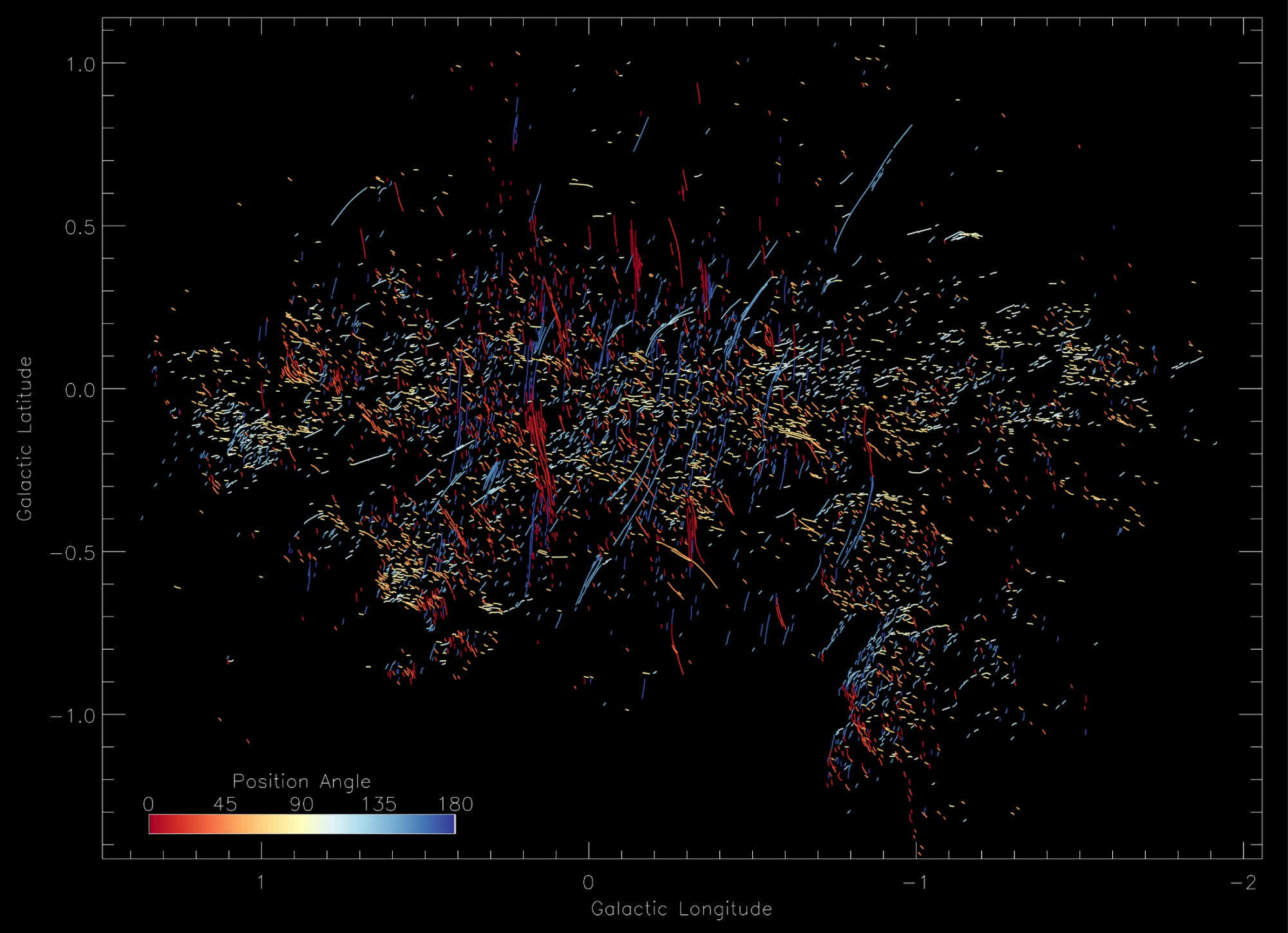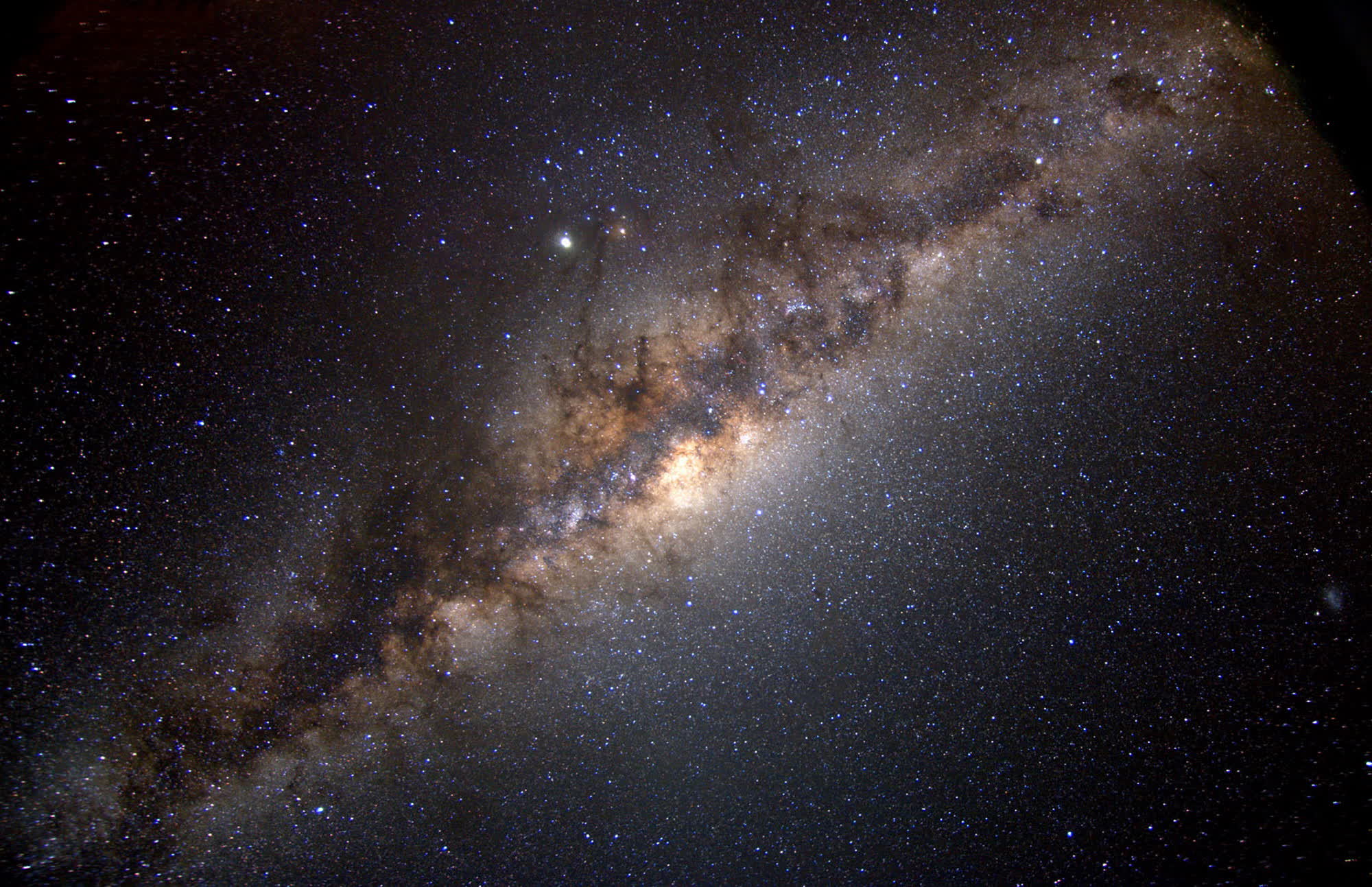In context: The supermassive black hole known as Sagittarius A* lies at the center of the Milky Way, roughly 27,000 light years from Earth. The whole galaxy's activity is influenced by this monstrous entity, and scientists are still finding new related phenomena which were previously unknown.
A new radio observation of the Milky Way's galactic core led astronomers to discover a new kind of "cosmic threads" emanating from the Sagittarius A* supermassive black hole. Hundreds of filament-like structures stretch from 5 to 10 light years in space, almost like some "secret" Morse code sent from the black hole to the rest of the galaxy.
The filaments were discovered by Farhad Yusef-Zadeh and other astronomers at Northwestern University in Evanston, Illinois, who used the MeerKAT radio telescope in the Northern Cape of South Africa. The MeerKAT observatory, which is the most sensitive radio telescope in the world, was employed in an "unprecedented" 200-hour survey of the galactic core, the scientists say.
In a new study published in the Astrophysical Journal Letters, the researchers describe a "degree-scale collimated outflow from Sagittarius A* along the galactic plane." Yusef-Zadeh had already discovered larger, vertical "highly organized radio structures" near the galactic center around 40 years ago, but the newly discovered, smaller filaments seem to originate from an unrelated, still unknown process.

The vertical, larger filaments discovered in 1984 possess strong magnetic fields, and they emit radio waves as they accelerate particles in cosmic rays to the verge of light speed. Researchers are still trying to uncover the nature of these structures, so the discovery of shorter, horizontal filaments also tracing back to the center of the galaxy left them "stunned."
The astronomers were able to uncover the new phenomenon thanks to MeerKAT's observation capabilities in the radio spectrum, and only after they filtered background noise out of the collected data. According to Yusef-Zadeh's hypothesis, the filaments were created around 6 million years ago when an outburst of material coming from Sagittarius A* slammed into surrounding stars and gas clouds.
The clash generated streaks of hot plasma that point back to the black hole, like blobs of paint blown across a canvas with a hair drier. The outflow from the black hole interacts with the structures it meets and distorts their shape, Yusef-Zadeh said, and it's enough to "blow everything in the same direction." By studying these cosmic threads, the scientists hope to collect new information about Sagittarius A* and the accretion disc of material orbiting around the singularity.
